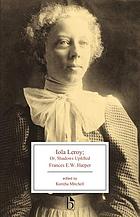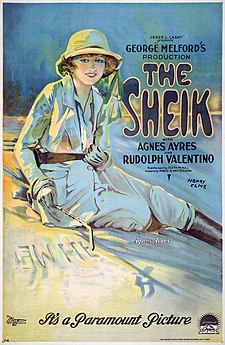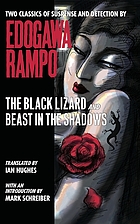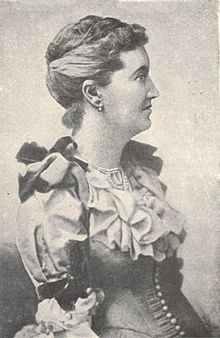"If a woman was naturally straight, jazz and night-clubs couldn't make her crooked ..."
-- Maybe, maybe not. From
Twilight Sleep (p. 581)
I had planned to read
The Glimpses of the Moon, since a friend has highly recommended it, but when I checked out the Library of America volume of Wharton's
Four Novels of the 1920s, its flyleaf described
Twilight Sleep (1927), about "the flapper mentality and the new York society ladies who turn to drugs, spirituality, and occultism to escape boredom and ennui." Well, sold!
Sadly, "occultists" was a little misleading, although there's some New Thought/New Age/guru stuff, and a main character who thinks she's a little psychic. Nonetheless, this was a very fast-reading story about a fast-paced world, surprisingly modern despite its period touches; for example, the home decorated in "the new bareness," where "nothing in it seemed at home or at
ease" (521), which sounds staged for Instagram. The main difference is that today there'd be a lot less visiting and dining together going on.
If a miniseries were made out of this, I can easily image the TV recappers yelling about the storyline's lack of "stakes," but that's part of the point in this tale of wealthy New Yorkers who can't find any escape from the hollowness of their lives. Marriage, children, career, religion, worthy social causes: all just lead to the same existential void, but it's described with sparkling, quotable wit. For a few example: a pretentious artist, whose
trompe l'oeil window is painted over a bricked-up real one says, "It was
really there; and I hate things that are really where you think they are. They're as tiresome as truthful people" (557). Divorce isn't just a fact of life, but a means of "having people's lives
disinfected and whitewashed at regular intervals, like the cellar"
(515). So at least the social commentary is interspersed with humor.
Complacent matriarch Pauline Manford is "proud of the fact that whole categories of contradictory opinions lay down together in her mind as peacefully as the Happy Families exhibited by strolling circuses" (515). She's so overbooked that her family has to schedule get-togethers with her social secretary, and they are all stifled to some degree by her competence and optimism. This includes her increasingly unmoored daughter Nona; her son Jim, struggling in his marriage to the fashionable Lita; and her husband, who feels his life in the city is just "artificial activity ... exertions that led to nothing, nothing, nothing ..."
The alternates he imagines, however, as a farmer "on the big scale, with all the modern appliances" (ibid), or maybe being a politician instead of a lawyer, don't seem like that much of a change. As he ponders, "they seemed, all of them -- lawyers, bankers, brokers,
railway-directors and the rest -- to be cheating their inner emptiness
with activities as futile as those of the women they went home to"
(619). All the characters are in some way limited by the modern world, and what is realistically available to them. The scandals of the vague, frivolous Lita (beginning with leaked photos from a nudist spiritual retreat, and culminating in an "eww"-inducing affair) are at least motivated by her relatable desire to go "anywhere where I can dance and laugh and
be hopelessly low-lived and irresponsible" (687). She may be ignoring her husband and her baby, but at least she articulates what she wants, which is more than anyone else in the novel is able to do.
While multiple characters struggle with dissatisfaction and ennui, Pauline remains the center. Her husband's casual thought is that it's a "pity Pauline wasn't a lawyer" (578), where she could have put her energy to some use. Instead she obsessively fills her time with wheel-spinning causes and trendy, expensive paths to promised spiritual enlightenment, all focused on what Wharton depicts as practically the national disease: "All her life she had been used to
buying off suffering with money, or denying its existence with
words" (691), searching for "perfect confidence that everything would
always come right in the end" (700).
Her whole attitude of positive thinking is largely described in negative terms. For her son, "his mother's glittering optimism was a hard surface for grief and failure to fling themselves on" (638). Her daughter is emotionally burdened by the people in her life: "it was as if, in the beaming determination of
the middle-aged, one and all of them, to ignore sorrow and evil, 'think them away' as superannuated bogies, survivals of some
obsolete European superstition unworthy of enlightened Americans,
to whom plumbing and dentistry had given higher standards, and
bi-focal glasses a clearer view of the universe -- as if the demons
the elder generation ignored, baulked of their natural prey, had
cast their hungry shadow over the young. After all, somebody in
every family had to remember now and then that such things as
wickedness, suffering and death had not yet been banished from
the earth; and with all those bright-complexioned white-haired
mothers mailed in massage and optimism, and behaving as if they
had never heard of anything but the Good and the Beautiful,
perhaps their children had to serve as vicarious sacrifices" (532).
Food for thought.
Be aware that there are some casual racial slurs, and a trip to "the Housetop," seems to be a stand-in for the Cotton Club (608). I'm assuming that the "Somaliland Orchestra" is similarly based on a real combo (553).
Wharton, Edith. Edith Wharton: Four Novels of the 1920s. New York, Literary Classics of theUnited States: 2015.






